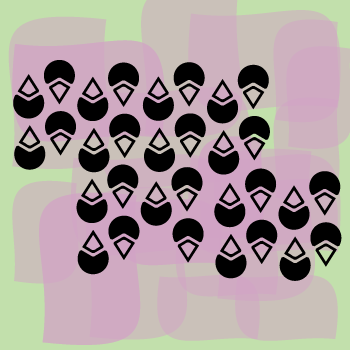By Andrea Castiglione, Founder of Silent Unicorn and raelic
While Web3 has yet to foster a native social network on a scale similar to Twitter or Instagram, that may not be the case for much longer. The structure of blockchain-based platforms, which sidesteps the concentrated power of major tech conglomerates, is primed to be uniquely appealing to brands, influencers and independent creators, all of whom have grown increasingly disillusioned with the algorithmic design of existing offerings in recent years. Where brands and creators go, so will their customers, followers, and fans. In the meantime, questions continue to circulate about what social media on Web3 will look like, how it will distinguish itself, and how it will court and gain its user base.
The under-the-hood issues of Web2 social networks
The ethical and structural flaws of Web2 social platforms like Twitter, Facebook and Instagram are not new, but almost no real alternatives have taken shape. Take Instagram’s latest push of algorithm-fed short video content in an attempt to keep up with TikTok. Instagram had to change position quickly when the update left users disgruntled as their curated feeds became overrun with recommendations of Reels from people they don’t follow. Web2’s top-down governance model, even now, is strikingly trial-and-error-driven, and the model prioritizes political or shareholder incentives in order to push features that users neither like nor want.
It’s hard to not imagine a purely David versus Goliath stand-off when Web3 is going up against a behavior model that predicts and influences outcomes – from what people purchase to who they vote for. Users with the dream of passive income or of making a living from social media networks are shadowbanned by Web2 platforms that have total control over user content.
The financially motivated revenue model built on advertisements means that harvesting and hoarding user data has become the modern equivalent of surveillance capitalism, violating digital privacy rights in every conceivable way. The centralized storage of this data also means it’s exposed to hacking, theft, and an overall unsafe online experience. But what causes all of this is the fact that users are not in control of what they are able to do with their own data. Until they are, feuds like the one between Facebook and Apple’s iOS 14 update – which forces apps to ask users to opt into third-party data tracking – will continue. Here, one party is championing user rights, while the other is declaring how this will harm small businesses.
Benefits of decentralized social media in Web3
Surveillance capitalism won’t go down easily just by social media platforms becoming decentralized or shifting from platform to protocol. To really ignite a new era of social media and solve major privacy and tracking issues with decentralized apps (dApps) that run on the blockchain, interoperability is non-negotiable. Web3 startups must start with enabling users to transfer their identity data and privacy wishes between protocols and platforms with little friction. Web3 platforms cannot declare that they have learned from the mistakes of Web2 if they still lack an easy-to-find opt-out option. Every layer of the tech stack should be more resilient, transparent, fairly arbitrated, and user-owned. In this scenario, there isn’t one company calling all the shots or a middle-man. Instead, the app exists on a peer-to-peer network made up of thousands of computers or nodes that are distributed across millions of citizens, councils and small regional hubs across the world. Users also have direct ownership over their content this way and can engage directly with their fans, followers or buyers.
In this next phase of social media, users won’t grapple with opaque security and censoring interfaces, as there will be more open-source browsers. In other words, the source code that decentralized social networks use is available for the public to inspect. This solves security and privacy issues and lets users understand the algorithms that put their images and videos in front of different users.
More public blockchains and para-chains solve the problem of centralized databases, which major tech giants own and use to store all user-created content. In Web3, decentralized storage protocols are being experimented with, like Arweave, which is backed by a sustainable endowment and leveraged by a token network.
How brands, influencers, and creatives benefit
One of the most important aspects of Web3 social media networks is the shift of ownership to users from the monolithic organizations currently controlling the marketplace. Brands and influencers who are willing to share ownership of their creations and offer royalties will thrive in this new ecosystem.
You’ll see influencers connecting more deeply with their communities and, to an extent, crafting their own micro-nations by tapping into the metaverse and hosting various learn-to-earn, play-to-earn, and other incentivized programs for their communities. Participating members can earn native tokens that they can use to unlock more features. Influencers can propose and co-fund projects with their verified users, whose integrity is authenticated by on-chain actions, and can have fan loyalty and support recognized by unique, exclusive offers.
Peer-owned and governed networks are more welcoming environments for all engaged users. It’s baked into the lifeblood of Web3 for users who find a resonant community or movement to more rapidly becoming community members for more projects. The main thing to get right is proportioning governance and ownership rights appropriately, with increasingly more decentralized autonomous organization (DAO) experiments. The number of DAOs formed, proposals made and votes actioned are already eight times higher in the past 12 months, suggesting that people may be more committed to a network when it uses a symbiotic model – where everyone benefits. All users should be allowed to own and be privy to their own personal information for as long as the blockchain they used to publish it exists. An additional perk of DAOs is that fans of corporate brands and influential movements will be able to receive perks, unlock features, and access certain services based on on-chain proof of contribution and participation, rather than nepotism or opaquely given rewards.
A new landscape for advertising and marketing
The discovery of relevant content could improve if it wasn’t up to traditional advertising models, which force organizations to compete using money to put out content. What this predatory ecosystem requires is wide-ranging modernization of advertising infrastructure in line with user consent-centric models. If interoperability becomes a reality for all, we’ll see companies with unprecedented freedom to engage with potential customers. Cross-platform collaborations will lead to increased numbers of digital tools and further exploration of virtual reality advertisements. Companies will also have to evolve and experiment with in-game advertisements in the form of 3D renditions within the metaverse.
The modernization of IP infrastructure will prevent bureaucracy from getting in the way of innovation, while also recording the time-stamped origin of clear ideas, insights, technologies and information to help protect the integrity and legal standing of public works. Web3 will continue experimenting with better data validation and more nuanced consent modules until users have the power to shape the way algorithms gather and disseminate information in Web3. Algorithms should be designed to optimize variables that bring maximum joy, inspiration and potential for transcendence to all users. Web2 reveals that the bar for advertising is far too low.
Diversity, inclusivity, and community in Web3
Web3 social platforms could trigger an evolution focused on community, inclusivity and diversity instead of industry giants’ profit-minded interests alone. Art creation and world-building tools in particular, like Web3 Adobe, Blender and Unity suite are set to abstract away lots of messy workings to give the power of digital assets and gateways to the new Internet. Better creator tools can support phenotypic-aesthetic diversity and enable more independent creators to craft works that will resonate with their unique lineages and community contexts, supporting cultural and environmental diversity. Independent creator culture is a potential wellspring of cultural recognition, evolution, and wholly new expression, but at the nexus of digital-physical interactions and physical-only ones. As for inclusivity, this is a matter of agency via access and educational facilities for those, who, if not prejudiced in any manner, would resonate with the digital worlds that a variety of people will craft.
About the author:
Andrea Castiglione is the Founder of Silent Unicorn, which established raelic in 2022. Raelic is an app that enables you to preserve your memories by minting your own personal photographs and videos as NFTs on multiple blockchains. Andrea was listed in Forbes 30 Under 30 and has a decade of experience in deep tech and is passionate about building successful tech companies in Web3. Andrea has built, invested in, and advised a number of successful blockchain-related tech businesses, eventually leading to the foundation of Silent Unicorn. Since 2016, Silent Unicorn has supported promising crypto and blockchain startups from around the world.
The views and opinions expressed herein are the views and opinions of the author and do not necessarily reflect those of Nasdaq, Inc.
Read More: www.nasdaq.com









 Bitcoin
Bitcoin  Ethereum
Ethereum  XRP
XRP  Tether
Tether  Solana
Solana  Dogecoin
Dogecoin  USDC
USDC  Cardano
Cardano  Lido Staked Ether
Lido Staked Ether  TRON
TRON  Chainlink
Chainlink  Avalanche
Avalanche  Wrapped stETH
Wrapped stETH  Wrapped Bitcoin
Wrapped Bitcoin  Sui
Sui  Toncoin
Toncoin  Stellar
Stellar  Hedera
Hedera  Shiba Inu
Shiba Inu  WETH
WETH  Polkadot
Polkadot  LEO Token
LEO Token  Litecoin
Litecoin  Bitcoin Cash
Bitcoin Cash  Bitget Token
Bitget Token  Hyperliquid
Hyperliquid  Uniswap
Uniswap  Official Trump
Official Trump  USDS
USDS  Wrapped eETH
Wrapped eETH  Pepe
Pepe  NEAR Protocol
NEAR Protocol  Ethena USDe
Ethena USDe  Aave
Aave  Aptos
Aptos  Internet Computer
Internet Computer  Monero
Monero  WhiteBIT Coin
WhiteBIT Coin  Ethereum Classic
Ethereum Classic  Ondo
Ondo  Cronos
Cronos  POL (ex-MATIC)
POL (ex-MATIC)  Mantle
Mantle  Render
Render  Dai
Dai  MANTRA
MANTRA  Algorand
Algorand